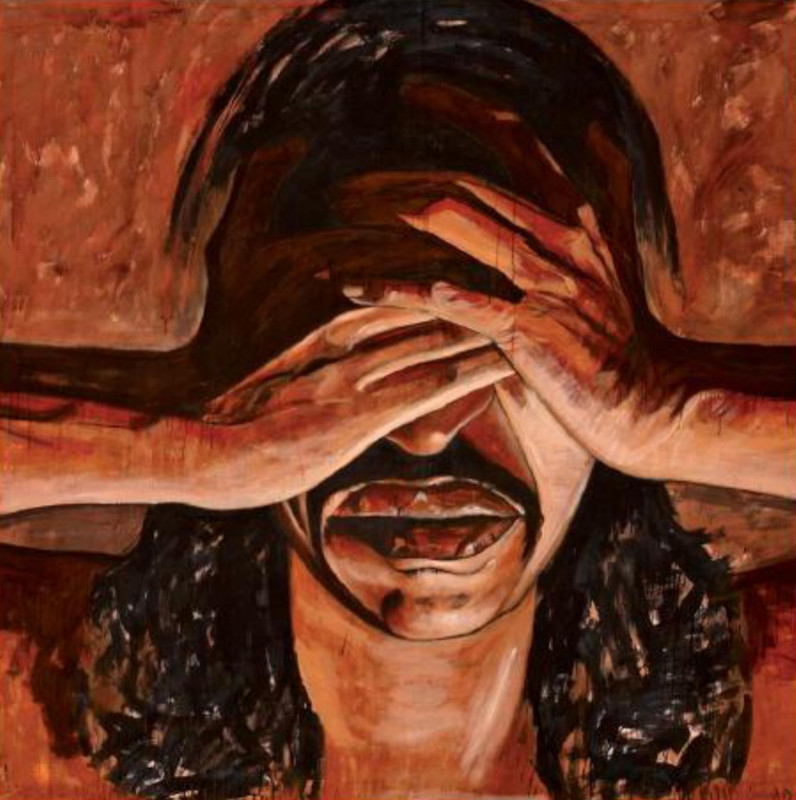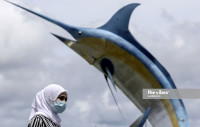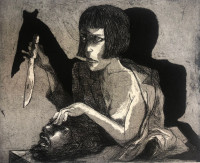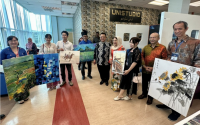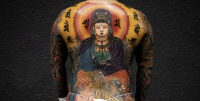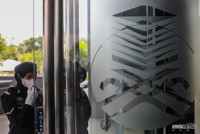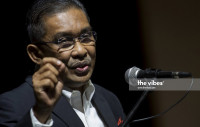“As a child, I loved cockfighting”
– Ahmad Fuad Osman
ANY time his name is mentioned, or a review comes out, the first thing that comes to mind was an incident at a formal dinner we were both invited to; a mutual friend confidently approached him and said: “Hello Farid, it has been a long time, how are you?”.
Fuad shook his hand, replied all was good and did not bat an eyelid. That is Fuad, always affable and has the perfect poker face.
Our meeting was at Segaris Art Centre in Publika, the venue chosen because we both wanted to see artist Edroger Rosili’s latest exhibition, 'On the Anatomy of Fate', which ends in mid-December.
Ed was one of Fuad’s protégés, and a particular work, 'A Tribute to Over a Million Love Songs on the Radio', (loaned for the exhibition by Pakhruddin Sulaiman of Ruang Pemula, or RuPe) stood a “migratory” cutout of Eve holding unto Adam backed by a chalkboard for support. It is participatory art, where viewers are invited to write verses of their favourite love songs.
Mine was an excerpt of Jeff Buckley’s ‘Forget Her’
Her love is a rose, pale and dying,
Dropping her petals in land unknown,
All full of wine, the world before her, was sober with no place to go.
Fuad got himself a chair, climbed and at the far right corner, he scribbled in blue:
Senja hitam, di tengah ladang,
Di hujung permatang kau berdiri,
Berdiri antara ribuan kembang,
Langit di atas rambutmu,
Merah tembaga,
Engkau memandangku.
It is a verse from Indonesian folk singer Ebiet G Ade’s 'Camelia 4'. My Jeff Buckley lyrics disintegrated, the yellow chalk slowly disintegrating.
That is Fuad – genuine, engaging and has a style so fine.
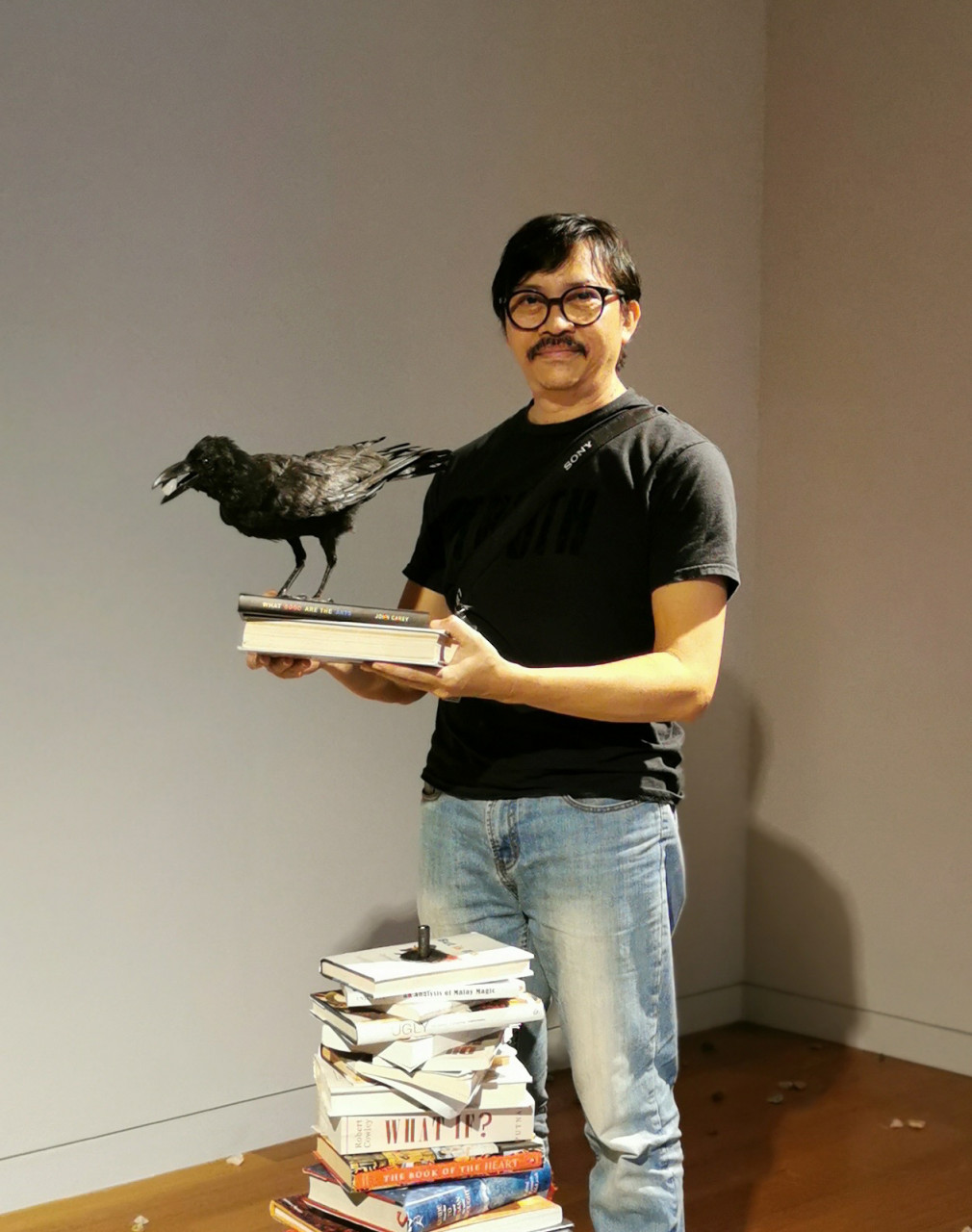
It was a four-hour conversation, which began with him as interviewer. He was gauging – “where do I start?”, he asks.
“How about 'Experiments with Truth', your first exhibition in 1998, based on Mohandas K. Gandhi’s autobiography?”
His eyes lit up. We are off to a great beginning.
“I must begin with Matahati, which was founded by Bayu Utomo Radjikin. It is, of course, the smart thing to do after graduating from art school – you know no one. The art scene then was nothing like it is now. I graduated in 1991, and there were not many galleries around, and they concentrated more on abstract works.
"Speaking of the themes of my works, artist Nirmala Shanmughalinghan was way ahead with her socio-political face-off and dramatic work of real-life internal representation montages. At the time of my first solo, it was already Reformasi. I was on the streets, trampled, tear-gassed, chased.
"I began to feel this sense of responsibility. Reading about things which happen around you is insufficient; you have to be there. So when it is expresssed through my art, it is from first-hand experience. I began to have that engagement between experience and the thing I produce, which must become one.”
Since there was no infrastructure or support, being a part of Matahati changed all that with Fuad. Instead of working individually, the idea of a collective was a smart move. The (then) seven members worked together, helped each other. Most were from small villages: Bayu was from Tawau, Sabah, two hours from the nearest city centre.
Fuad hails from Baling, Kedah. Kuala Lumpur might as well be the Twilight Zone for them. Four years of art school changed everything, but the question remained: “How to succeed and be recognised? Where do they go and who to go to?”
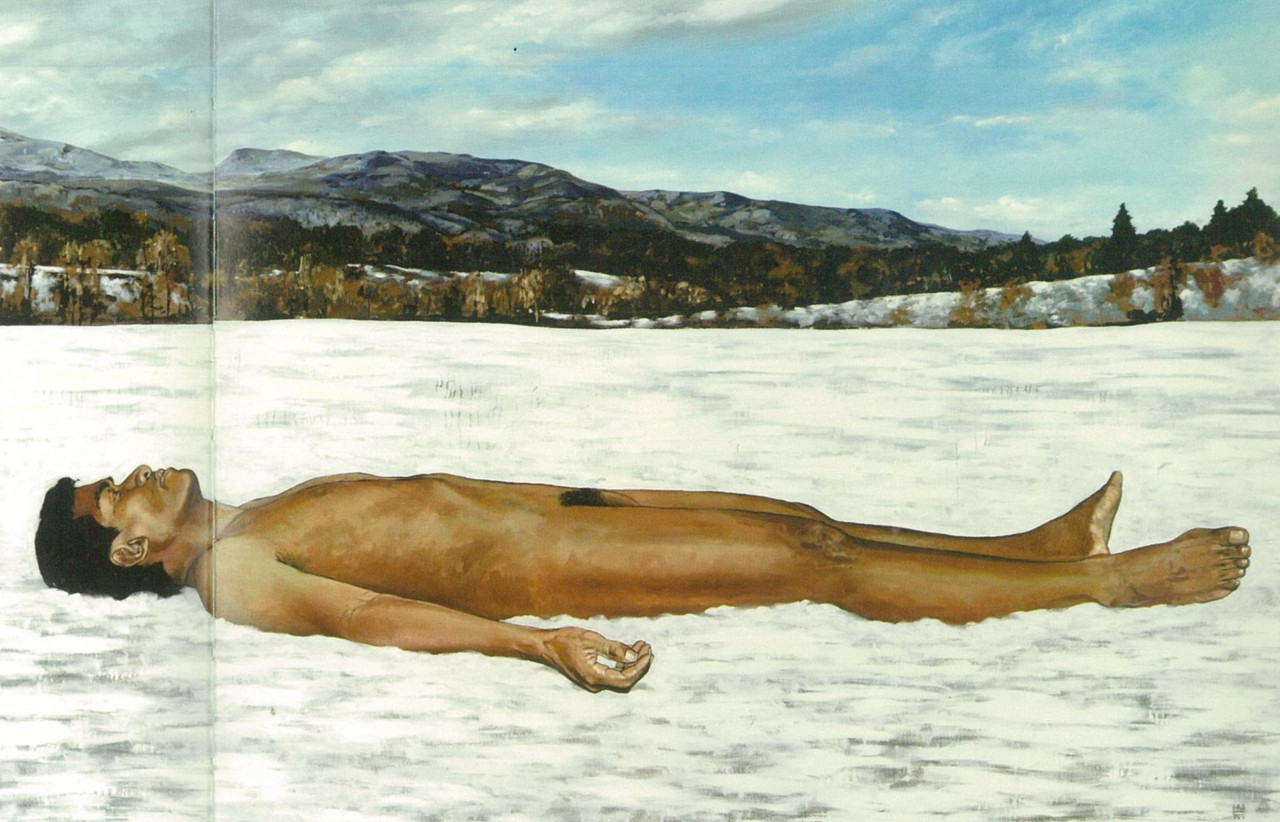
“At one point, we had a tabung (piggy bank), which we started after our first show, ‘Life’ at Maybank Gallery in 1993 to cover expenses for Matahati. In terms of semangat (spirit), we were one. We did odd jobs, I was a ‘waiter’ for a friend’s kuey teow stall in Petaling Jaya, I did window displays for shopping malls, and later, went into production work for theatres; in the art department, doing sets and props.
"I even sewed … batik. My paintings then were not going to be sold out over night, and I consciously decided to get out there and earn. But I wanted work which had to do with art, and production work deals with sets, music, costumes, colour balance, paintings, arrangement, textures, lighting, moods, ambience and more. When I had enough money saved, painting became my life. I did these things until the 2000s. At Matahati, we made a pact – in five years, each member must have a solo exhibition.”
He did, exactly five years later. The late Syed Nabil Syed Nahar of NN Gallery took a chance on Fuad, even though there was not really a ‘market’ for his kind of works. Fuad compiled a portfolio – old-school style – pasting pictures with glue on plain white paper encased in a plastic folder. Nabil published a leaflet with the support of Wong Hoy Cheong and Amir Muhammad.
Fuad grew up in a small village in Baling, where there was no art books in the library, or any reference to it. In an interview to enter art school for a degree in Art and Design, he was asked, “Which artists are you familiar with?” His answer: Jaafar Taib and Azman Yusoff. Back then, he used his allowance to purchase 'Fantasi', one of the many awe-inspiring publications of Creative Enterprise.
'Fantasi' became the basis of his art collection – but in 1989/90, there was a major flood in his hometown, and he lost his precious treasure.

He was accepted. His first year was a whirlwind – he never knew what art encompassed and its many disciplines. In his second year, Fuad had to pick two majors. He wrote down:
1. Fine Art
2. Fine Art
The rest is history.
Fuad studied under Fauzan Omar, Ismail Zain, Joseph Tan, Awang Damit, and Sulaiman Esa. He remembers going to Fauzan Omar’s solo at the Australian Embassy, and that fuelled him.
“In Baling, there are three historical moments which I will always remember: the meeting of Tunku Abdul Rahman and Chin Peng – I went to the school where the meeting was held, Sekolah Rendah Kebangsaan Tunku Putra. The second was the 1974 Student Uprising in Kuala Lumpur which happened because of food shortage in Baling.
"The third was in 1985, the Memali Incident; Ibrahim Libya was accused of inciting people to go against the Government. These three moments in history happened in my hometown. It affected my consciousness and awareness. I wanted to know why I was so drawn to socio-political issues.”
He moved his studio from Sungai Buloh to Klang, and the decision was made partly due to his exhibition 'At the End of the Day Even Art is Not Important' being held at Malaysia’s National Art Gallery (Balai for short) in October 2019. His previous studio was on the third floor, and after the Sharjah Biennial, half of his works were sent directly to Balai. When the exhibition concluded, crates upon crates of his installation were delivered back, and Fuad made the move for a more suitable premise.
Fuad’s practice has matured and thrived over the years; his status as a force to be reckoned with is undeniable. In his works, Fuad alters between contrastive expressive styles and emotional registers ostensibly without much sweat or reluctance.
He turns from the figurative to larger-than-life canvases ('Imitating the Mountain', 2004, is an ongoing “heart attack”) with endless figures, and from observations of seemingly insignificant stories to allegorical attitudes and mind-blowing scenes, both real and fictional.
Ironically, Fuad, as most do not realise, does not secernate between the "in the flesh" and the political – they somehow merge into commentaries shaped by his own experiences to be an artist who really has something to say. – The Vibes, November 29, 2020



